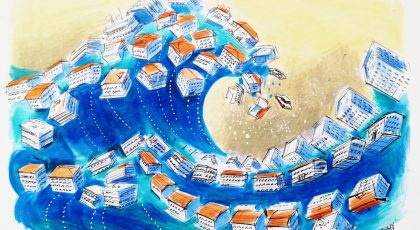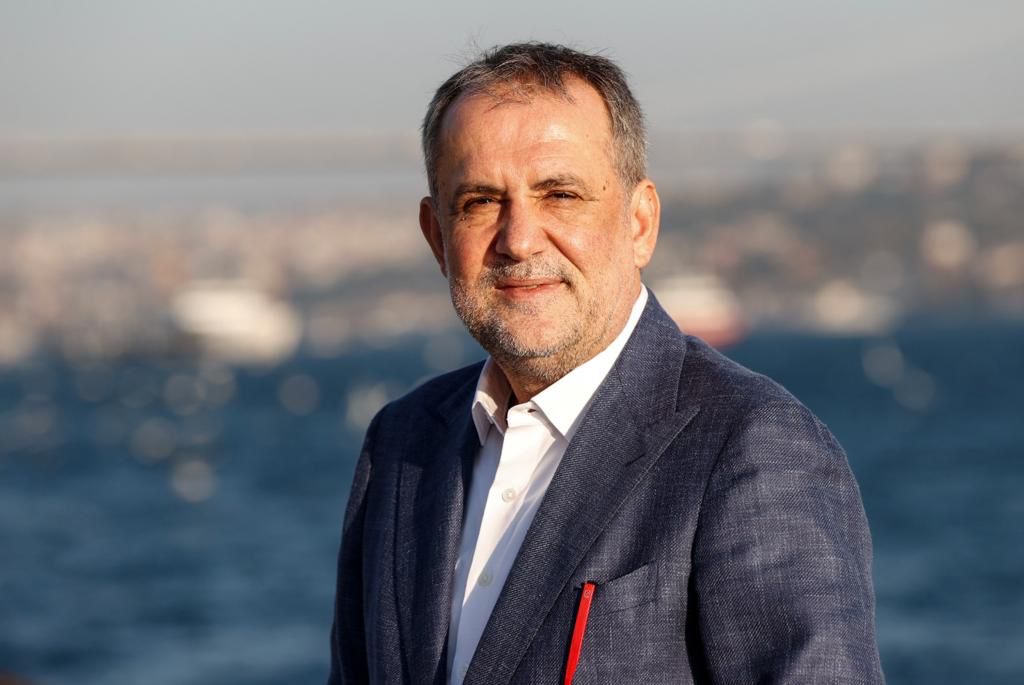I am sure you have seen a myriad of articles, books, postcards and albums titled “Once Upon a Time in Istanbul.” They usually refer to ancient and natural wonders in Istanbul. Let me take you on a trip once upon a time in Istanbul but not that far back in time, rather the time when it was “unbearable” to live in Istanbul. Let’s take a look at a newspaper headline dating back to 1993: “Istanbul inhales garbage” Another headline in 1992: “Eminönü is a pile of garbage” Another one: “Halkalı dump site is one big hazard” Another headline goes: “Dump site disaster in Ümraniye: 16 people dead” We are talking about newspaper headlines dating back to 20 years ago, not far back in time. Back in the day, reading newspaper headlines where piles of garbage would burst into sight and people died of it were something ordinary for Istanbulites.
Istanbul cannot breathe
Istanbul was not known solely for piles of garbage back then. Air was polluted, too. Nobody would believe me when I say people were dying of air pollution. Those who find it hard to believe should check reports of the newspapers at the time. People would flock into hospitals for complaints caused by air pollution while some would die of cancer or various diseases. Let’s take another look at the headlines from 1990s. “Istanbul kills”, “Air pollution makes sick”, “Air pollution beyond the limits in Istanbul”, “Government steps in for suffocating Istanbul”, “Even rainfall failed to clean the polluted air”, “Air pollution increases the cancer risk”, “This weather kills”. You may feel like you are in a fantasy when you read the headlines. Perhaps you thought that I was joking.
Istanbul or Rwanda
Istanbul was a topical issue not only for piles of garbage or air pollution but also for water scarcity as a major problem. “Is it Istanbul or Rwanda?”, “Drought summer around the corner”, “Say hi to water shortage”, “Lake Terkos has 2 inches of water,” 95 days of water supply left”, “People of Istanbul seek remedy for microbe-free water”, “Istanbul writhes in water scarcity”. The aforementioned headlines were all over the place in newspapers 20 years ago. Istanbul was a city where people would line up by a fountain to fill up their cans of water. Dear readers, it all happened in Istanbul. The headlines go back to that time. Let’s remember why wastes were not collected at the time: Some disagreements between trade unions and municipalities over how to collect solid wastes in Istanbul increased the number of environmental problems ahead of the year 1994. While the population was nearly 8 million at that time in Istanbul, wastes were not properly collected, creating piles of waste in the streets. As Istanbul Metropolitan Municipality failed to pay salary for its employees, they were on strike all the time, causing piles of garbage across Istanbul, even in the central parts of the town. People would have garbage collected out of their own pocket but waste collectors on strike would prevent them from doing so. The irregular collection of wastes led to piles of garbage and make people incinerate them in an uncontrolled fashion as the streets were getting narrower in Istanbul. So, this caused both air pollution and financial loss. The fact that domestic waste was collected, stored, treated along with medical waste posed a risk of transmission of Hepatitis B and HIV to human beings.
Dump site disaster in Ümraniye
A major disaster broke out in Hekimbaşı Dump Site, Ümraniye on 28th of April, 1993. All types of waste were stored all together without any separation, and then randomly dumped without any proper training. Therefore, a major landslide took place in a landfill. Situated right next to the dump site, some shanty settlements were buried under tons of waste. It claimed 27 lives and left no trace behind for 12 people. Tens of people became permanently disabled. After taking office in 1994, the former Istanbul Metropolitan Mayor Recep Tayyip Erdoğan promptly took a series of actions to have waste collected to begin with, and offer a solution for water scarcity and eliminate air pollution. With efforts mobilized for Istanbul, the new city administration introduced plants to individually collect garbage, domestic waste, medical waste etc., which used to be collected all together and dumped into unsanitary landfills with no supervision. In addition, Erdoğan and his team not only eliminated water scarcity but also took a proactive measure for water supply to last for tens of years thanks to the supply imported from Istrancalar (Strandzha).
From Piles of Garbage to Bidding for Olympic Games
Getting involved in Gezi Park protests, young people born in ’90s, whom we call generation Y, do not know about such major problems that people faced in Istanbul 20 years ago as they did not suffer from that in person. They cannot fathom what Istanbul metropolitan municipality was like and where it stands now. For them, I brought up the headlines dating back to 20 years ago. They should remember them so that they could find out what the team with a successful background in running Istanbul and then Turkey has done for the country, and give credit to that team, and disregard the instigators provoking them on the pretext of a few trees being cut down, and make sure they do not turn a blind eye to the big picture. In conclusion, if it was not for environmental efforts exerted across Istanbul since 1994, it would be a pipe dream to make it to the final round to host the Olympic Games in 2020. The city will always remember those to serve her.



